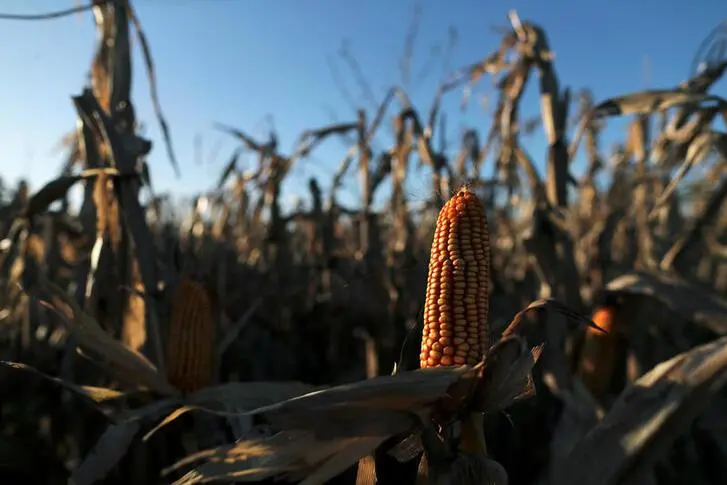PHOTO
FORT COLLINS, Colo.- After two consecutive disappointing corn harvests, U.S. farmers are hoping for better luck in 2021, particularly with high profitability prospects. Things are off to a good start and if the weather cooperates this summer, U.S. corn stockpiles next year could recover from seven-year lows.
The U.S. Department of Agriculture’s statistics branch placed 76% of the U.S. corn crop in good or excellent condition as of Sunday, well above the trade guess of 70%.
Within the past decade, the initial corn rating came in at 76% one other time (2014) and above it twice: 79% in 2018 and 77% in 2012. The initial scores in those three years were the highest of the season, though 76% appeared a couple other times in 2014.
USDA publishes national conditions when a certain portion of the crop has emerged, and the scores reflect only that emerged share. As of Sunday, some 81% of the U.S. corn crop had emerged, the largest percentage coinciding with the initial rating since 2004.
This means more of the crop than usual was available for the first evaluation. Last year only 64% of the corn had emerged when USDA initially pegged conditions at 70%, but that score rose to 74% in the following week on 78% emergence, the latter of which is above average for the date.
Not all market participants are fans of crop conditions given the subjective nature, but there are some identifiable trends. There is not a lot of downside to yield potential when early corn condition scores top 70%. The only major exception was in 2012 when a massive drought followed the initially promising start.
The best corn harvests are not associated with early corn conditions below 70% good-to-excellent. One exception to that might be 2017 when the initial 65% score somewhat masked the strong potential, and the crop went on to a record 176.6 bushels per acre.
BY STATE
Although the 76% good-to-excellent rating is similar to the year-ago 74%, there are a few notable differences by state. The corn in No. 2 producer Illinois was rated 80% good-to-excellent on Sunday, well above the year-ago 56% and among the best early ratings in the last decade.
Ohio’s score at 79% topped last year’s 62%, and the crops in both Ohio and Illinois have emerged ahead of typical pace. Colorado’s corn is behind normal development pace due to cool and wet weather last month, but the 78% good-to-excellent towers over the year-ago 53% that coincided with drought.
Severe drought still plagues North Dakota, where corn conditions came in at 48%, far below last year’s 73%. However, emergence was super slow in 2020 versus this year’s more advanced pace of 63% emerged by Sunday. North Dakota is likely to remain a sore spot in the crop condition mix, especially with the stretch of very hot and dry weather expected for the next several days.
At the state level, low early corn ratings are not always a bad omen as favorable summer weather can provide recovery. For example, only 52% of Illinois’ corn was in good or excellent condition at the end of May 2017, but the state eventually produced a record yield that year.
SOYBEANS UPCOMING
USDA will publish the first national soybean ratings on Monday, June 7. It is not certain why, but early soybean conditions on average tend to be a couple points lower than those for corn.
The 2020 soybean crop was initially rated at 70% good-to-excellent, a bit above the longer-term average for the week. Yields ended up close to trend last year due to late-season dryness, though expectations had been higher earlier in the season.
The best initial soybean rating in recent years was 75% in 2018, and that led to the second-best national yield on record after 2016, when the first condition score was 72%.
There is not as strong a relationship between initial soybean conditions and final yield outcomes, possibly because of the high dependence on timely rainfall later in the season. Some of the better crops had initial ratings below 65%, but the lowest early scores tend to be associated with below-trend yields.
Low ratings should probably not be a consideration for this year’s crop, which seems to be in good health so far. Condition ratings for the U.S. Crop Watch soybeans are stronger than they have ever been, and this is the fourth year of the project.
That excludes North Dakota where the crop has not sufficiently emerged for evaluation.
Some 62% of U.S. soybeans were emerged as of Sunday, ahead of the five-year average of 42% and behind only 71% in 2000 and 69% in 2012.
(Editing by Matthew Lewis) ((karen.braun@thomsonreuters.com; Twitter: @kannbwx))












